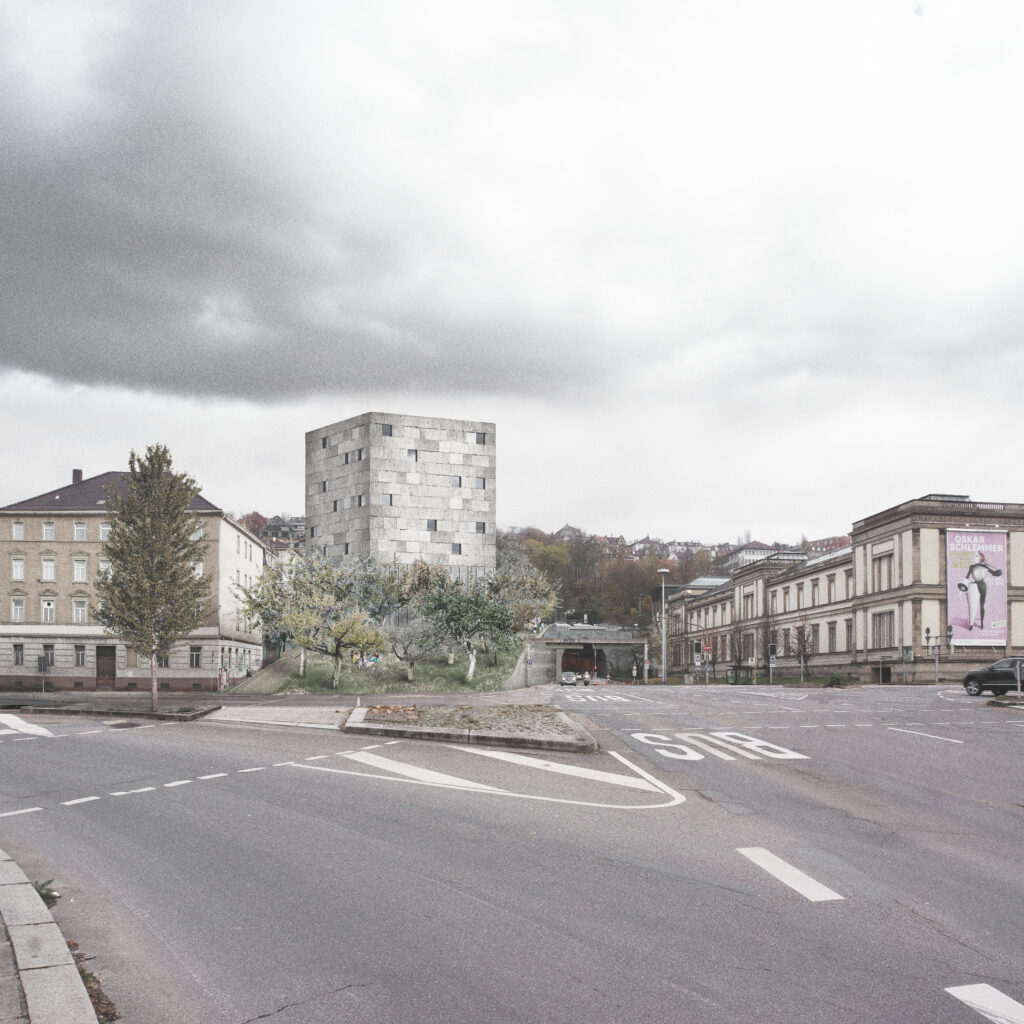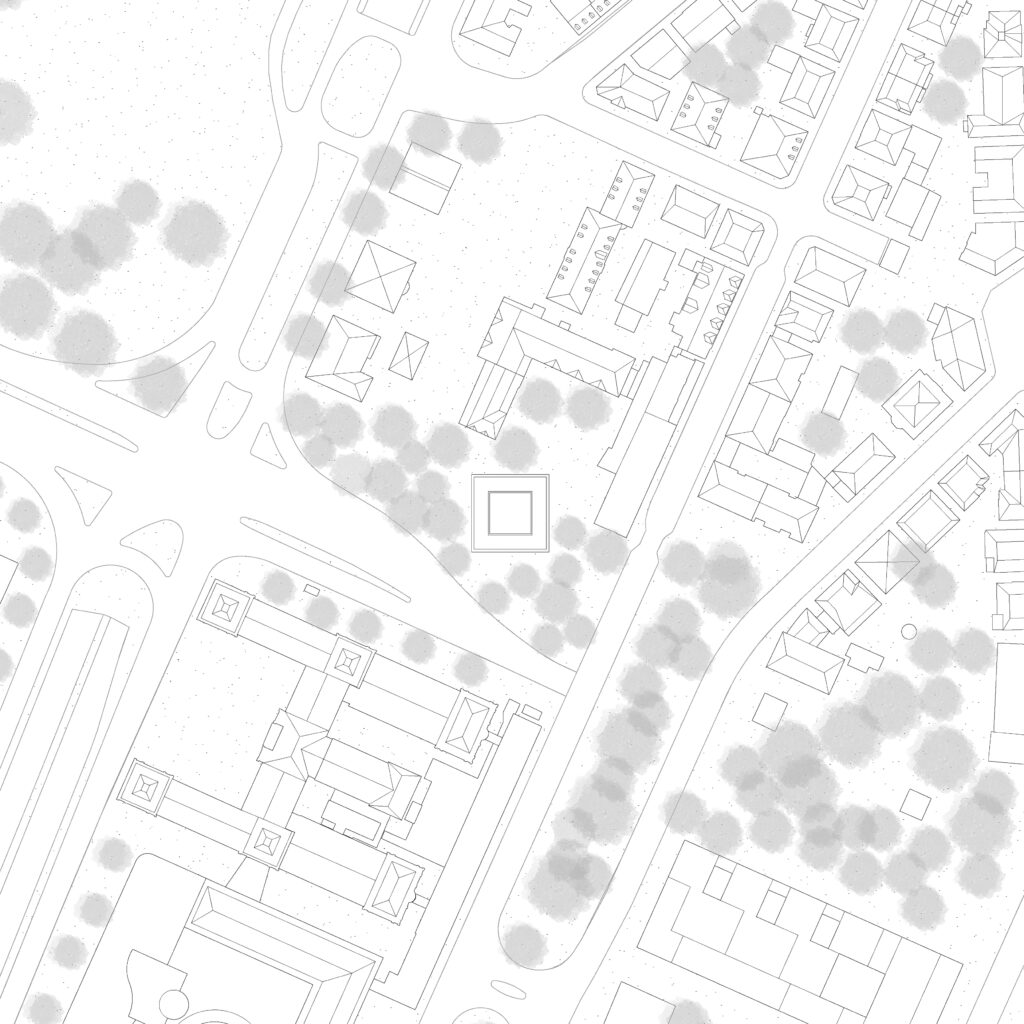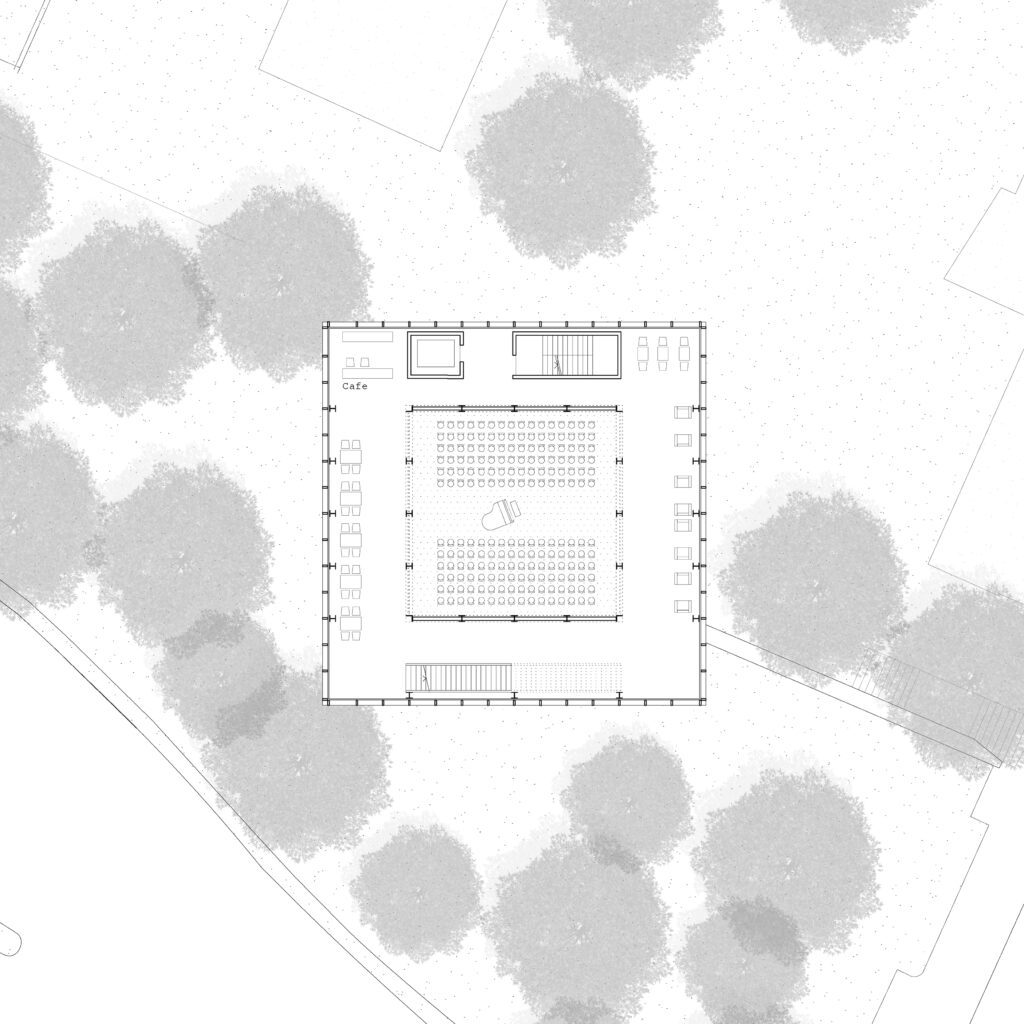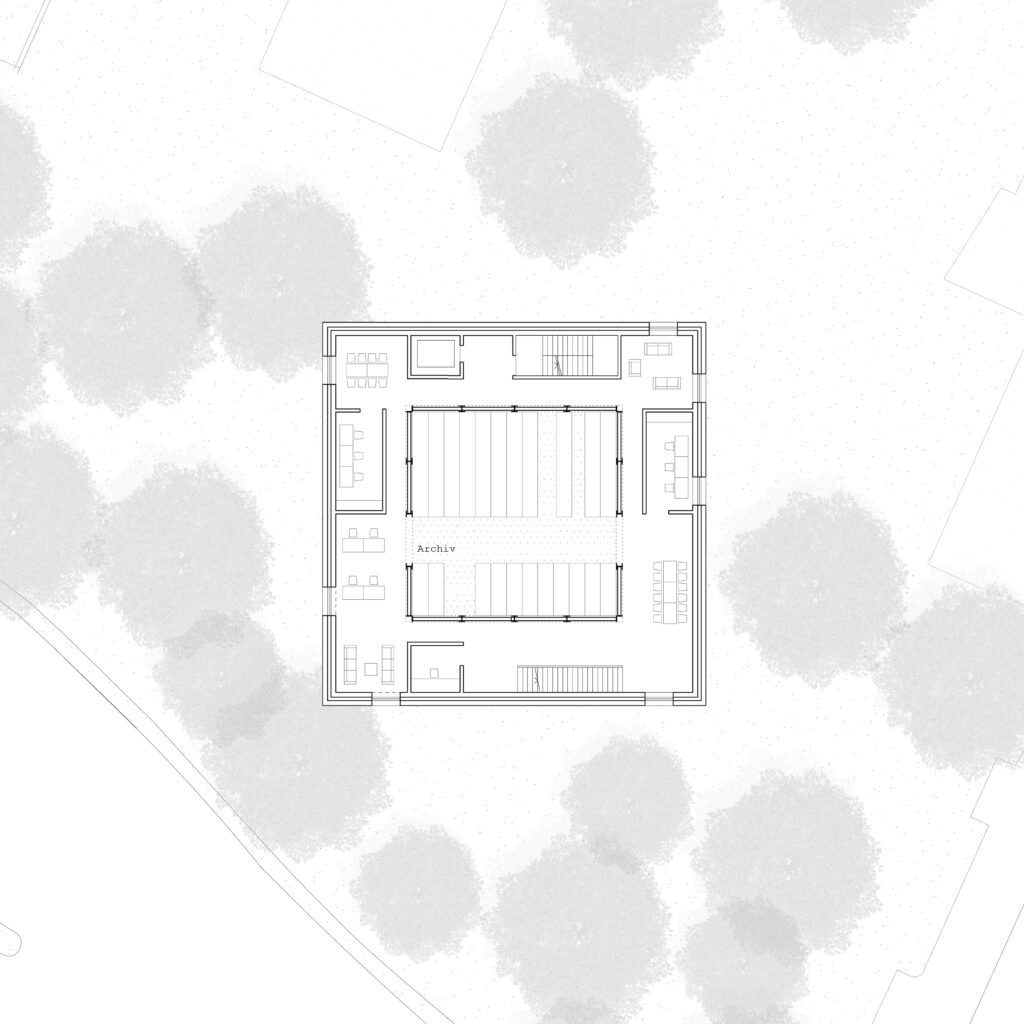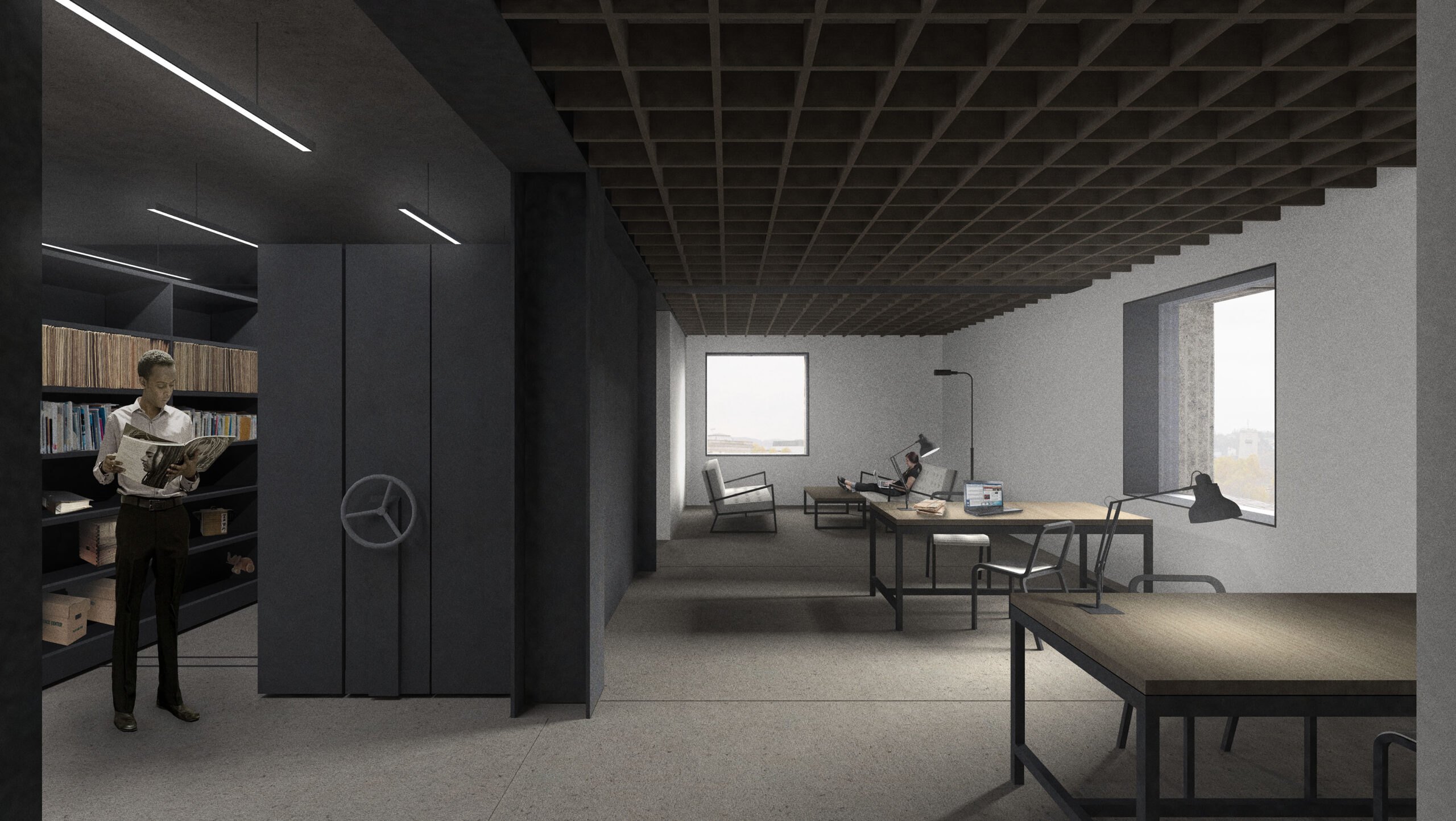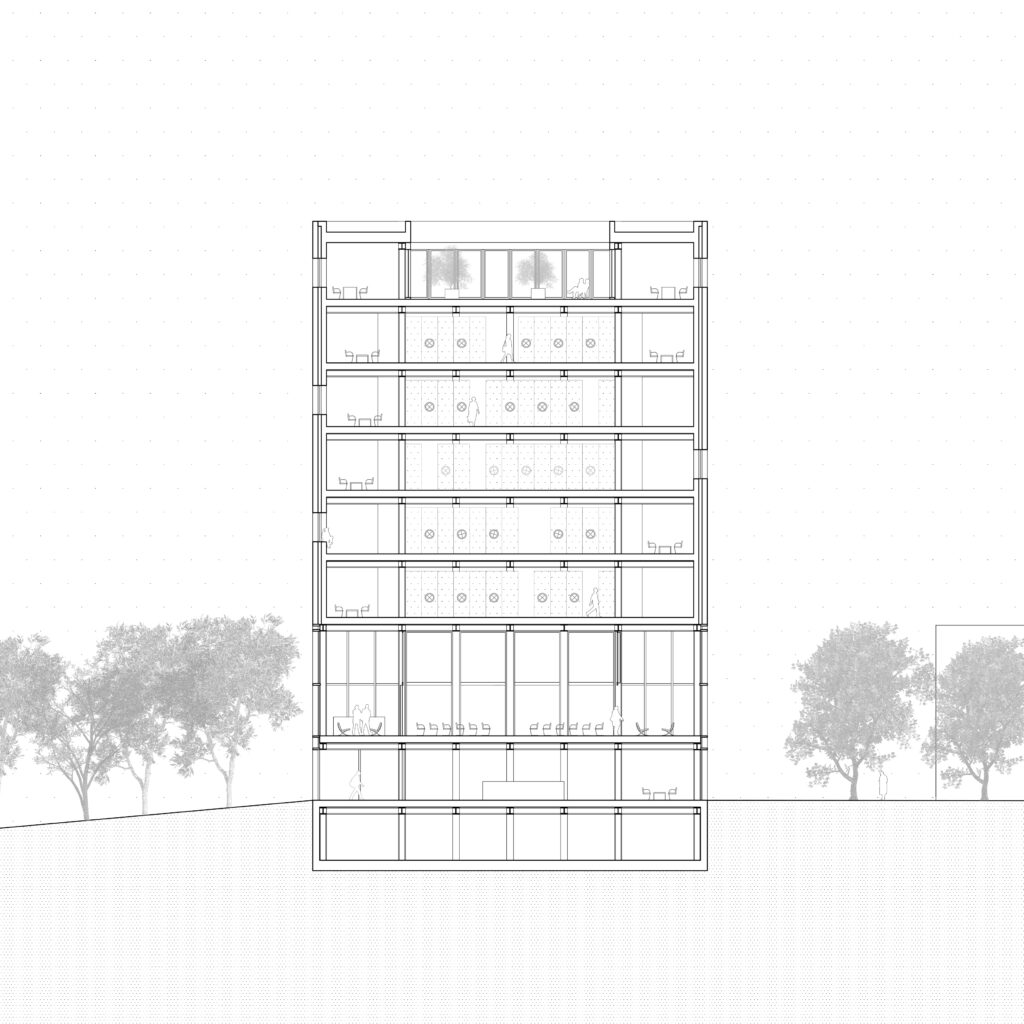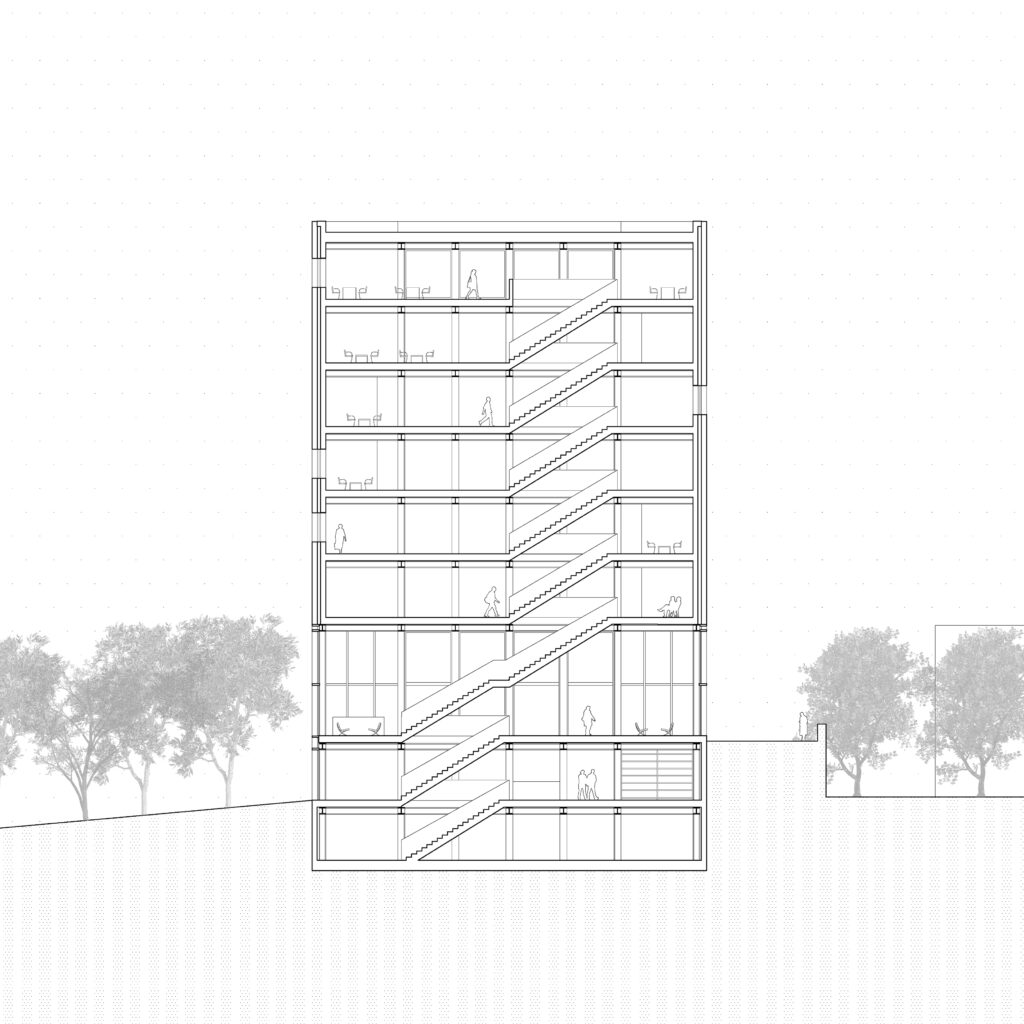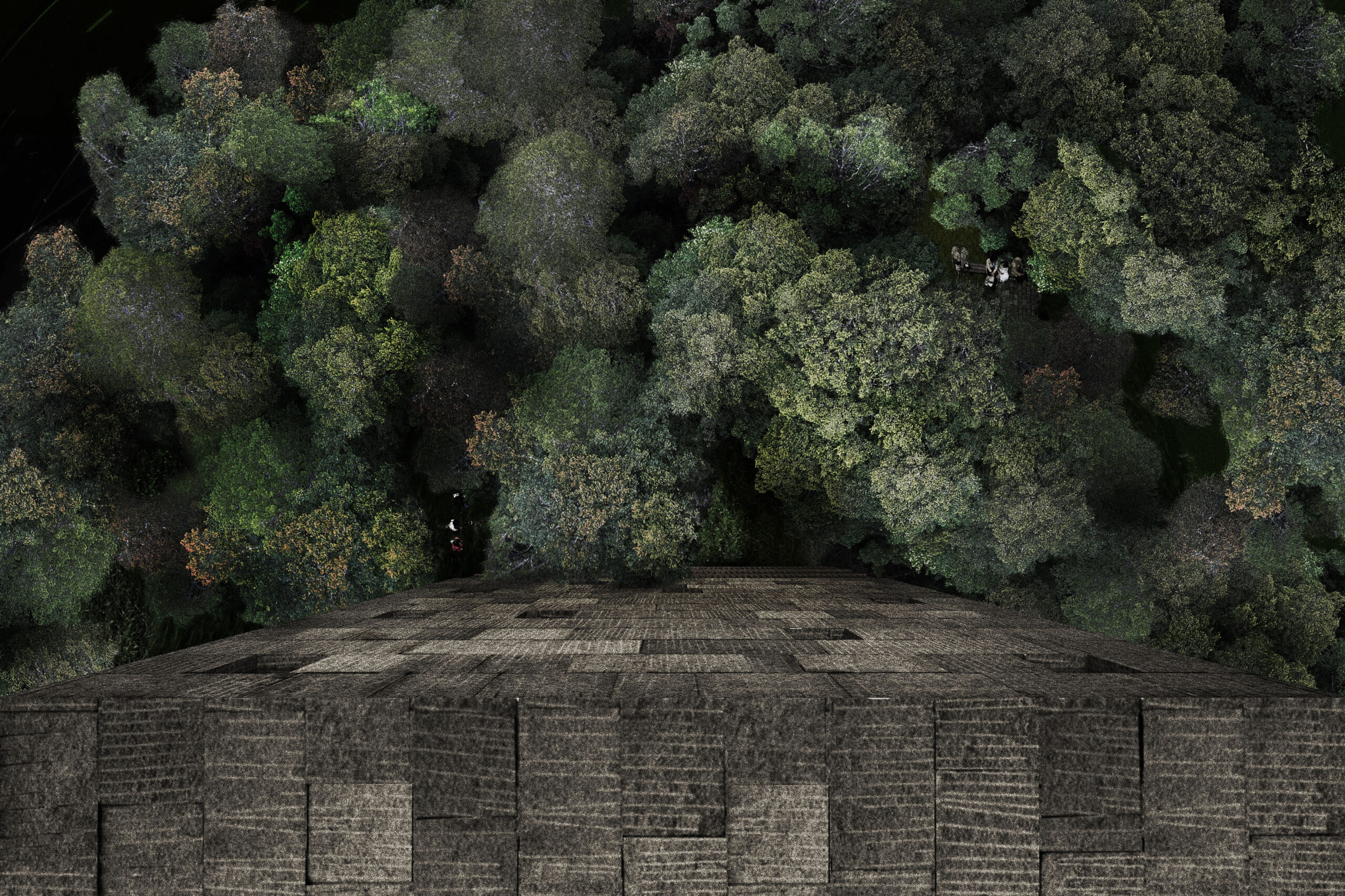Urban Design
The found property appears in the city plan as the last possibility to connect the green spaces in the basin and on
the eastern slopes. The design traces the topography of the former vineyard and at the same time forms the largest possible demarcation with the neighboring road. In the midst of this green area appears a solitaire. A massive boulder that seems to float above the treetops. A shelter for the treasures of the population. The building blocks itself with its materialization, in large stone panels deliberately against its environment in order not to insert itself as another building block in the culture mile. The rotation of the volume from the main axis of the neighboring development further enhances this effect. The shelter is supported by a sturdy yet open and light steel construction that, thanks to extensive glazing, allows the surrounding landscape to penetrate the interior of the building. In contrast, the archive body appears introverted and defensive.
Atlas
Spatial Concept
Functionally, the design is divided into three areas. In the capture, the mediating and meeting, and the securing
and reflecting. In the entrance level and the basement there are places to record, archive and manage the materials for migration. The assembly hall level offers the possibility of versatile use for events, seminars
and meetings. In addition, the shelter extends with archive space and attached reading and working niches. The attic is followed by a spacious multi-purpose room, in the middle of which a roof terrace completes the space. The open spaces are determined by an informal arrangement of different fruit trees, which allows the autonomous development of the property. The dense planting does not immediately reveal the view of the entrance.
Programmatic
The history of migration is the history of humanity. Humans have been walking the globe ever since, and now
more than ever before. A conscious engagement with the past therefore seems inevitable. The design of the Documentation Center for Migration creates a place where migration history can be secured, viewed, conveyed, shared and communicated. A public space for everyone. A place for personal as well as scientific observation. Anyone can archive materials, whether in the form of a brought article, a video message, an audio recording or other media. The resulting collection is freely accessible to the whole world and is available on site.
